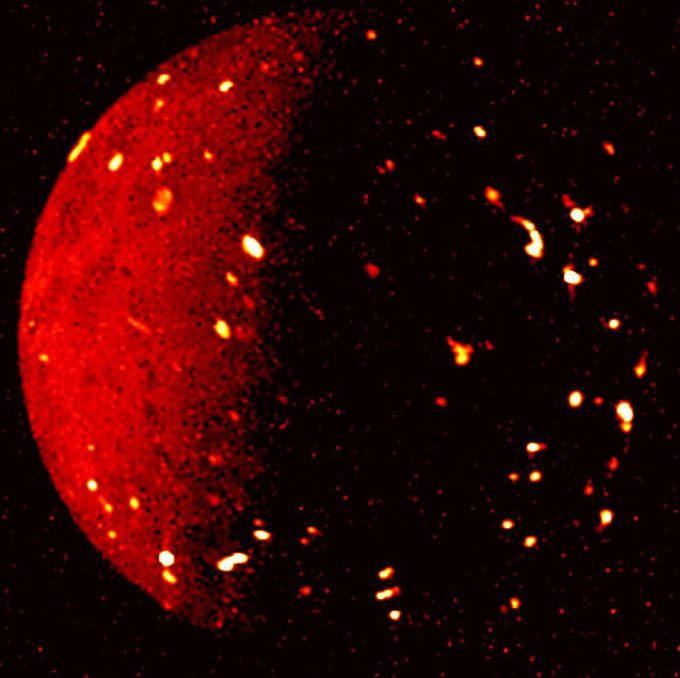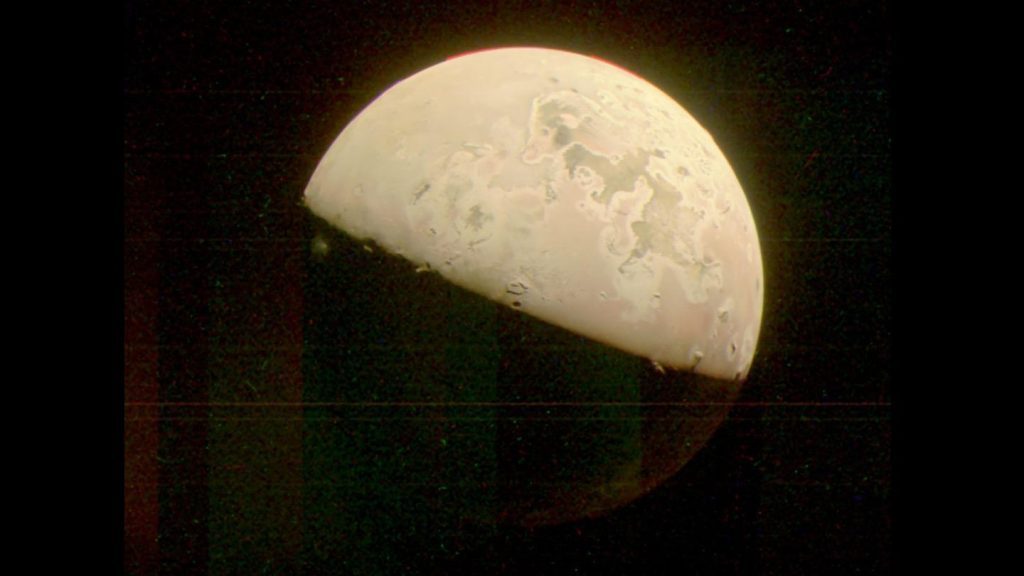Jupiter’s moon Io may have been erupting for a very long time.
Io is the most volcanically active object in our solar system, with some of its volcanoes shooting magma higher than planes on Earth fly (SN: 5/3/22). And while extreme, it seems that this hellish behavior is no short-lived phase. Io may have been volcanically active throughout its entire 4.57-billion-year existence, researchers report April 18 in Science.
“If Io has been volcanic for its entire history, the amount of material that has to have erupted onto its surface is tens to hundreds of times its entire mantle,” says Caltech planetary scientist Katherine de Kleer. That erupted material must then be repeatedly recycled back into Io’s mantle, she says.

Using data from the ALMA radio observatory in Chile, de Kleer and colleagues determined the concentrations of both heavy and light variants of sulfur and chlorine in Io’s atmosphere. Volcanic processes eject both variants from Io’s mantle into its atmosphere, where the lighter variants are more likely to be lost to space. Over time, the heavier variants should become increasingly concentrated in Io’s atmosphere, acting like a meter of its volcanic activity.
Io has lost somewhere between 94 to 99 percent of its total sulfur, excluding whatever may be stored in its core, the team found. If Io had always been losing sulfur at anywhere from half to five times its current rate, calculations suggest that depletion would have taken all or most of Io’s lifespan.
The longevity of Io’s volcanism could have implications for its sibling moon Europa. The pair are orbitally locked in a gravitational dance that pumps heat into both. If this heat has long sustained Io’s volcanism, it may have also warmed Europa, de Kleer says, perhaps one of our solar system’s most habitable worlds (SN: 4/19/22). And so, as one moon raged in an endless temper, its sibling may have long harbored conditions favorable to life.



